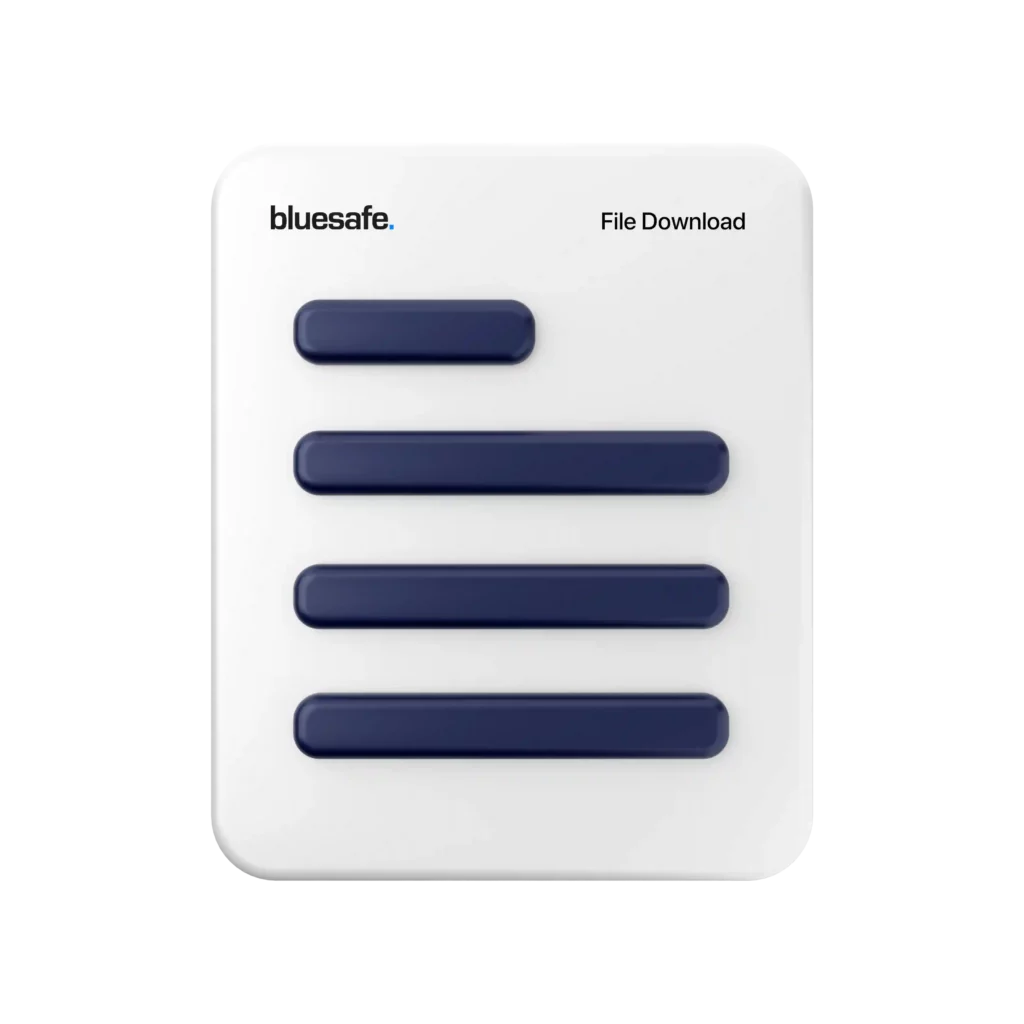Introducing our Safe Work Method Statement Template, specially designed for wire fencing! Our comprehensive template is helpful for all contractors, builders, and workers who deal with wire fencing on their project sites. With this SWMS template, you’ll have a pre-filled and fully editable document that covers all the essential aspects of safe work practices, ensuring that you and your team stay safe on the job.
Let’s take a closer look at the key features of our SWMS template:
- Pre-filled and Comprehensive: Our SWMS template is pre-filled with relevant information, making it easy to use straight away. It covers all the critical elements required for safe work practices when working with wire fencing.
- Fully Editable and Customisable: The template is fully editable and customisable in Microsoft Word format, allowing you to make any necessary changes to suit your specific project requirements.
- Includes Scope and Project Details: The SWMS template includes the scope of the project and the necessary project details to ensure that all workers are aware of the specific work being performed.
- Checklist of High-Risk Machinery: Our template includes a checklist of any high-risk machinery on the site, ensuring that all necessary precautions are taken before commencing work.
- Staff Training Record: You can record staff training in the template, ensuring that all workers have the required training before starting work.
- Before and After Risk Ratings: The SWMS template includes before and after risk ratings to evaluate the effectiveness of the safety measures implemented.
- Legislative References: We provide resources for the use of legislative references, ensuring that you comply with all relevant laws and regulations.
- PPE Requirements: Our template includes all PPE required for working with wire fencing, ensuring that all workers are adequately protected.
- Risk Assessment and Matrix: The SWMS template includes a risk assessment and risk assessment matrix, providing a clear and detailed understanding of potential hazards and risks.
- Checklist for Compliance: We include a checklist to ensure all requirements have been covered when implementing the SWMS, ensuring compliance with all necessary regulations.
- Sign-off Page: The SWMS template includes a sign-off page for all workers and responsible persons, indicating that they have read and understood the document.
- Easy to Use and Customise: Our SWMS template is easy to use and customise, saving you time and ensuring that you have a comprehensive document for safe work practices.
- Suitable for Large Contracts and Tenders: Our template is suitable for large contracts and tenders, including tier 1 contractual work, providing you with a professional and comprehensive SWMS document.
- Instantly Delivered Download: You’ll receive your SWMS template as an instant download, allowing you to get started on your project straight away.
With our Safe Work Method Statement Template, you can have peace of mind that you and your team are working in a safe and secure environment. Order your template today and take the first step towards ensuring the safety of your workers and the success of your project.
Here is some safety information regarding working with wire fencing.
Purpose: The purpose of this Safe Work Method Statement (SWMS) is to outline the steps and procedures to be followed when installing wire fencing to ensure the safety of workers and members of the public.
Scope: This SWMS applies to all workers and contractors involved in the installation of wire fencing.
Hazard Identification:
- Sharp edges on wire and tools used
- Tripping hazards from wire and tools
- Working at heights
- Risk of cuts and lacerations
- Noise pollution from machinery
- Exposure to weather conditions
Risk Assessment:
- Risk of injury to workers and members of the public is high if proper safety measures are not followed.
- The risk of injury can be minimised by using appropriate personal protective equipment, ensuring safe work practices are followed, and providing appropriate training.
Control Measures:
- All workers involved in the installation of wire fencing will be required to wear personal protective equipment (PPE), including safety glasses, gloves, and safety boots.
- Workers will be trained on the safe use of tools and machinery.
- Tools and machinery will be regularly inspected to ensure they are in good working order and pose no safety hazards.
- Workers will be required to take breaks when necessary to prevent fatigue and maintain focus on the task at hand.
- Workers will be required to work at heights with appropriate fall protection equipment and safety harnesses.
- A safety perimeter will be established around the work area to protect members of the public from potential harm.
- All work will be carried out in accordance with relevant Australian standards, codes of practice, and legislation.
Procedures:
- All workers will be required to attend a safety briefing before commencing work.
- The work area will be inspected for any potential hazards and appropriate measures will be taken to mitigate risks.
- Workers will be required to wear appropriate PPE at all times while on the work site.
- Machinery and tools will be inspected before use and any defects will be rectified before proceeding.
- Workers will be required to work at heights with appropriate fall protection equipment and safety harnesses.
- The work site will be clearly marked with warning signs and a safety perimeter established to prevent members of the public from entering the work area.
- Work will be carried out in accordance with relevant Australian standards, codes of practice, and legislation.
- Workers will take breaks when necessary to prevent fatigue and maintain focus on the task at hand.
Emergency Procedures:
- In the event of an emergency, workers will stop work immediately and follow the emergency procedures outlined in the safety briefing.
- Workers will be trained on the emergency procedures to be followed in the event of an incident or accident.
Review:
- This SWMS will be reviewed annually or when changes occur in the work environment or practices.
- Workers will be consulted during the review process to ensure the effectiveness of the control measures implemented.
Gary’s Safety Tips 
Greetings everyone, it’s a pleasure to discuss with you today the significance of imparting training to workers on safe work method statements. I understand some of you may be thinking, “Here we go again, another training session,” but rest assured, this one is unique. It is focused on ensuring your safety and ensuring you return home unharmed.
When it comes to workplace safety, it’s not just about meeting requirements and regulations. It’s about being responsible for your safety and that of your colleagues. That’s where safe work method statements come into play.
So, what exactly is a safe work method statement? It’s a document that outlines the necessary steps to complete a task safely. It entails identifying hazards, evaluating risks, and implementing control measures to manage those risks. It guarantees that everyone involved in a particular task comprehends what needs to be done and how to do it safely.
Now, I’m aware that reading a document can be tedious. But that’s where training comes in. By providing training on safe work method statements, we can ensure everyone understands how to stay safe. We can explain the significance of things like identifying hazards, risk assessment, and control measures in a manner that is easy to comprehend.
And let’s be honest, accidents can happen. But by providing training on safe work method statements, we can reduce the risk of such incidents occurring. We can encourage our workers to take responsibility for their safety and that of their colleagues.
However, it’s not only about safety. Providing training on safe work method statements can also boost productivity. When everyone understands what they need to do and how to do it safely, tasks can be completed more effectively and efficiently. There’s less likelihood of errors and less time wasted on rework or correcting mistakes.
So, what does this training entail? It can take various forms. It may be a classroom-style session where we go through the document in detail and answer any questions. Alternatively, it could be a practical demonstration where we show people how to implement the control measures outlined in the document. Or it could be a mix of both.
The key is to make the training engaging and interactive. We want everyone to be involved and committed to the process. We want them to feel like they are part of a team that prioritizes safety and cares for one another.
Let’s not forget the importance of follow-up. Providing training is one thing, but ensuring people put it into practice is another. We must check in with our workers and ensure they understand what they need to do to stay safe. We need to reinforce the significance of safe work method statements and ensure they are consistently used throughout the organisation.
In summary, providing training on safe work method statements is not a mere box-ticking exercise. It is a means of ensuring the safety of our workers and the productivity of our organisation. By empowering our workers to take responsibility for their safety, we can cultivate a culture of safety that benefits everyone.
Remember, accidents can occur, but they don’t have to. By providing training on safe work method statements, we can mitigate the risk of incidents and keep everyone safe. Let’s take responsibility for our safety and that of our colleagues.
Cheers,

![]()






